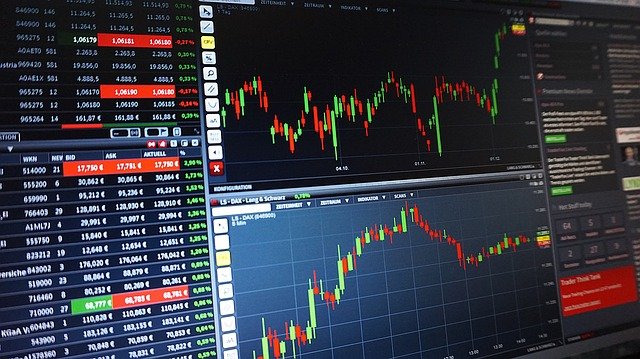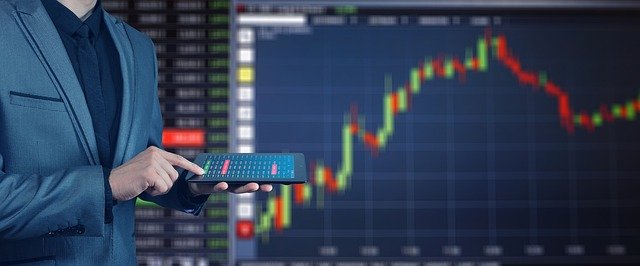The selection of charts and their detailed study clearly show that the price of an asset is bound to move in one of the two directions. Either up or down, and that happens for extended periods of time. There is no absolute cause as to why that would happen, but it does happen and there is nothing that can be done about it. The traders who are successful enough have learned to follow these charts and make profits out of the movements the charts show. They identify patterns and follow those patterns.
Trend traders make an effort to isolate and extract profit from trends. The method of trend trading tries to capture gains through the analysis of an asset’s momentum in a particular direction; there are several ways to do this. Of course, no single technical indicator will punch your ticket to market riches; in addition to analysis, traders also need to be well-learned in trading psychology and risk management. But certain strategies have stood the test of time and remain popular tools for trend traders who are interested in analyzing certain market indicators, says celebrated Business Astrologer cum Astro Strategist Hirav Shah.
Hirav adds, “It has been observed that the trend following strategies are dependent on technical analysis, but that is just one side of the picture. The technical analysis can include reading charts. These charts can be of different types, and there can be patterns in them that can be read and followed. On the other hand, trend following is more of a systematic approach and needs to follow a particular method. Trend following depends on the use of mathematics that is not very complex. It is used to identify trends and follow them for decent periods of time.”
“Traders who follow trends tend to believe that there are a lot of trends that exist across different industries and markets, and there is a solid reason as to why that happens. These people believe that security’s price is the most important thing to consider. But the truth is, almost everything that the traders need to understand can be figured out just by studying price action.”
“To understand what trend following is, first it is imperative to understand what the importance of price and price trends is. The people who follow trends generally use technical analysis so that they can identify trends and precisely calculate their entry positions in the market. To calculate when to exit, they use price action.
The key that can tell the traders where the market is about to move is the price. It can tell the investors almost everything that they need to know. It can tell them what the future is about to hold in itself. Due to this, the people who follow trends majorly focus on the movement of price.
These people almost always completely disregard the fundamental factors like geopolitical events, economic data, and business details.”Hirav Shah explains, “Trend followers always have an argument regarding fundamental analysis and its nature in terms of whether it is futile or fruitful. Everything that the traders need to know can be told by Price. Whether the market is going up or down, whether things should be sold or bought. If the traders think that they can learn what directs the market movements, they will also realize that it is nearly impossible to learn so, and hence, it is better than the focus be paid to price movements only. That makes it easier for the traders to make better money.“
It’s not all about technical analysis
The trend followers always claim that what they do is not completely technical analysis. They gravitate more towards the fact that trends exist everywhere and in different spheres like politics, fashion and economics as well. The point being that trends exist everywhere.
It is crucial to remember that trends are also dependent on the behavior of the investor. For instance, the enthusiasm of an investor can take the price of the stock to extremes of extremities. This, in turn, can make those stocks susceptible to reversals that can be painful to the investors but the trend followers adapt to such situations and tend to get out of them before the market turns against them.
The boom of dot com is a prominent example of irrational investors which takes the trends to the levels of extreme. There are also a lot of other cases during history. These include the mania of the Dutch Tulip in the 17th century. The south sea bubble in the 1800s, the GameStop revolution, and who can forget the ups and downs of bitcoin?
What is the longtail and why should I be looking for it?
In a long-tail distribution, when less than 50% come under the core 20% of the requirements, that makes the chase of the long tail majorly profitable for a lot of businesses, no matter how big or small they are. The same logic is applied to the investors who follow trends. Longtails are basically the characteristics of the financial markets. If the broad selection of stock returns is seen as a broad picture, it can be seen that only some of them move moreover 15%-10%. There are also some stocks that move around 10-200% and even 500% in some cases. These are the long tail stocks that the trend followers are on a forever hunt for. This is also because these offer the biggest opportunity for profits.
Basics of trend following strategies
Since the trend followers are always looking for the long tail, they tend to develop a straightforward strategy. They will buy when the market is on a rise, and they will look to sell when the market is about to go down. They feel that by doing this, they can ride the wave of the trend and make the best out of it.
They either have no idea or even if they do, they just don’t care what is driving that trend. Since they are unbiased, they can make profits on each side. Since no trend will fit into the distribution of the long tail, some will have a short life and will die out early.
It is like the waves at the sea. There are bigger waves, there are shorter waves and there are ripples. Sometimes there are also monsters that wipe out the whole thing. The big waves and the monsters are the times when the traders make their profits.
Hirav Shah wraps it up by saying, “Following trends is important, and it can also get risky for the traders to do so if they don’t pay attention to what is happening in the market for the long haul. So always make trades on the basis of mathematics and not on the basis of anything else.“
“Indicators can simplify price information, in addition to providing trend trade signals and providing warnings about reversals. Indicators can be used on all time frames, and for the most part, they have variables that can be adjusted to suit each trader’s specific preferences. In addition, traders can combine indicator strategies–or come up with their own guidelines–so entry and exit criteria are clearly established for trades.“






























